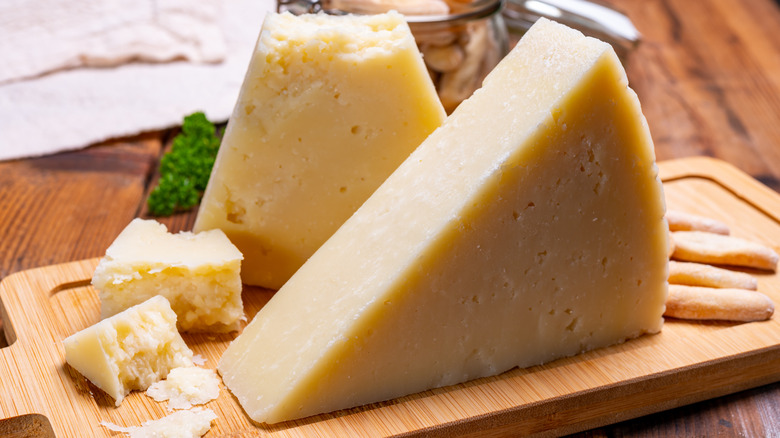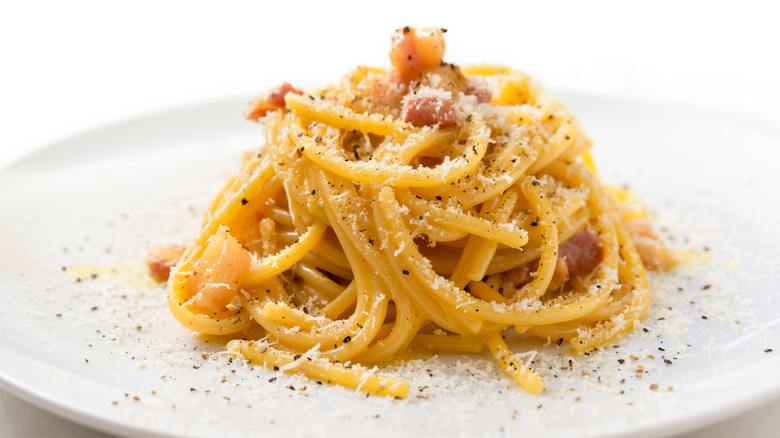What Is Pecorino Romano Cheese And What Does It Taste Like?
Pecorino Romano is one of Italy's most beloved cheeses — only slightly lower in popularity after mozzarella and Parmigiano-Reggiano, according to Statista. Sharp, crumbly, and ideal on a cheese plate or grated onto savory dishes, it's best known for being an essential ingredient in all four of Rome's famous pasta sauces: cacio e pepe, Amatriciana, gricia, and carbonara (via The Extraordinary Italian Taste).
There's a reason why "pecorino" is often followed by another term, such as Romano or Sardo. In Italian, "pecorino" comes from the word for sheep, "pecora," and refers to any cheese made from sheep's milk (via The Spruce Eats). While Pecorino Toscano is mild and grassy, and Pecorino Siciliano often contains peppercorns, Pecorino Romano is the saltiest and strongest of these sheep's milk cheeses (via MasterClass).
Ancient Romans used to survive on the product during long marches, according to Italy Magazine, and while it is still known as the cheese of Lazio (the Italian region that is home to Rome), it is mostly produced in Sardinia because of the vast number of sheep on the island. In the three areas where official, government-protected Pecorino Romano is produced, strict regulations must be followed, from the diet of the sheep to the maturation of the cheese.
How Pecorino Romano differs from Parmigiano-Reggiano
Besides the obvious — Pecorino Romano comes from sheep's milk, while Parmigiano is made from cow's milk — these two Italian cheeses have different flavor profiles as a result of their production differences (via The Spruce Eats). Both cheeses start with fresh milk that is coagulated with starter cultures to form curds, which are then cut finely and pressed into molds to drain out the whey, according to The Spruce Eats. The cheese is then salted and aged for several months as it grows increasingly firm and granular in texture and complex in flavor.
The minimum aging period for Parmigiano-Reggiano is 12 months, while Pecorino Romano can be fully matured after eight months, according to The Extraordinary Italian Taste. Both cheeses are similar in texture and ideal for grating, but a plate of cacio e pepe made with all pecorino Romano versus all Parmigiano-Reggiano (or a mixture of both), for example, will have a noticeably bolder, sharper, and saltier flavor. Parmigiano-Reggiano, on the other hand, is sweeter and nuttier (via The Spruce Eats) and will melt into pasta and other dishes a little less assertively. It is for this reason that Parmigiano-Reggiano, known in Italy as the King of Cheeses, is an all-purpose cooking cheese, while pecorino is used in more particular scenarios.
Not convinced? Both cheeses are excellent for snacking as well as for cooking, so take a bite of each in their purest forms and make your own judgments.

